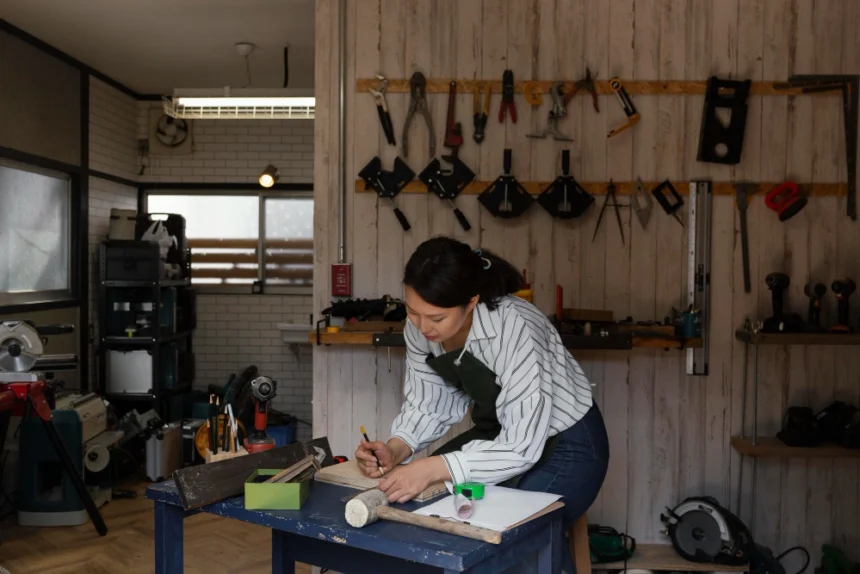A workshop that runs smoothly is a result of deliberate planning, thoughtful storage, and habits that keep everything in order. When workshop tools are well-placed, clearly grouped, and easily accessible, the difference in productivity is striking. A job that once dragged now moves quickly, with fewer interruptions and less frustration along the way.
Planning a Layout That Supports Daily Tasks
Before rushing to rearrange drawers or install shelving, take a step back and consider how you actually use your space. The layout should reflect the kind of work you do most often. If your projects revolve around precise benchwork, then that surface needs to be well lit, open, and clear of clutter. But if your routine leans towards mobility, flexible storage and portable stations will matter more than fixed setups.
The crucial point is not appearance, but accessibility. If every job begins with a scavenger hunt for the right spanner, you are losing more than just minutes. A smart approach is to position frequently used items within easy reach of the task area where they are needed most.
Choosing Storage Systems That Fit the Space
The variety of storage systems available today can feel overwhelming, but not every option suits every setup. Pegboards and magnetic strips are brilliant for keeping regularly used tools visible and ready to grab. For items that need more care, rolling tool chests or sturdy drawer cabinets provide dust protection and reduce wear.
Whatever system you choose, consistency is key. Establish clear categories and stick to them. Keep all your measuring tools in one place, store cutting tools in another, and label zones so there is no second-guessing. Over time, your hands will instinctively reach for the right spot, which saves both time and mental effort.
Giving Priority to Tools That See Daily Use
A common mistake is giving every tool the same level of prominence. Those specialty gadgets you use once in a blue moon don’t need prime bench space. Everyday items like pliers, screwdrivers, and spanners deserve positions that are eye-level and close at hand.
Grouping by function can also streamline workflow. Imagine pulling out a container that holds all your sanding gear in one place. Instead of piecing things together from three corners of the room, you are ready to start straight away. This kind of task-based organisation reduces interruptions and keeps projects moving without unnecessary delays.
Maintaining Tools So They Are Always Ready
An orderly space loses its edge if the tools themselves are not in working condition. Blunt chisels, dead batteries, or dusty equipment can stall progress in seconds. That said, good organisation should always go hand in hand with regular upkeep.
Build a routine that suits your pace. Wipe down tools after each use, sharpen edges when needed, and check that batteries stay charged. Even setting aside a small area for maintenance creates a visual reminder that care is part of the process. These little habits add up, keeping your gear reliable and ready whenever you need it.
Building Habits That Promote Long-Term Efficiency
Organisation does not end once the racks are mounted and the drawers labelled. The real challenge is maintaining the system day after day. Returning tools to their spots may sound obvious, but in the rush to finish a task, it is often neglected. Over time, this small slip undermines the entire setup.
If others share the space, communication becomes even more important. A colour-coded system or a simple printed guide helps everyone follow the same rules. When the whole household or team respects the order, the workshop almost manages itself.
Final Thought
Setting up an efficient workshop is never about achieving perfection but creating a system that works for you and evolves with time. As projects change and your collection of tools grows, so too will the way you arrange them.
Done well, this process pays immediate dividends. The space feels lighter, jobs move faster, and the satisfaction of steady progress becomes its own reward.










